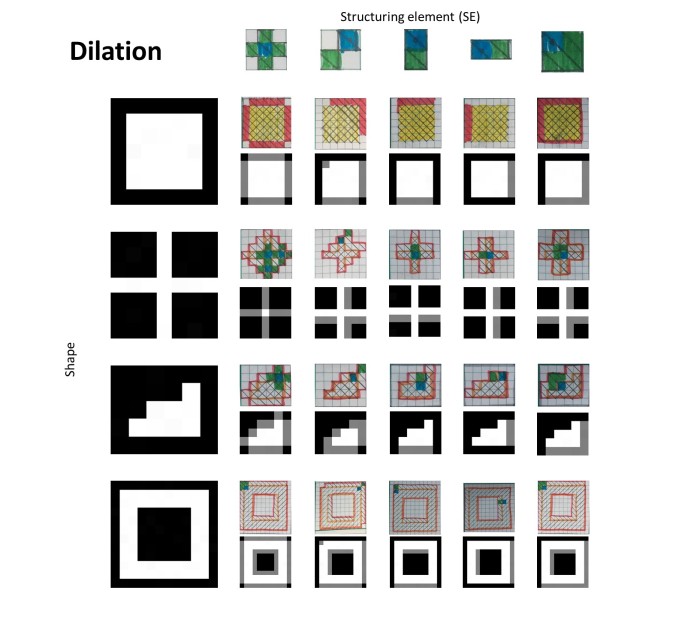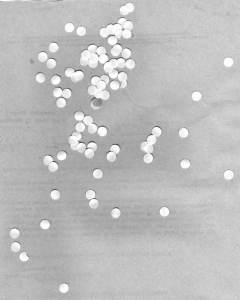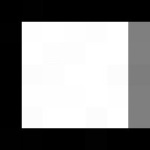This activity ground my gears trying to manage, fix, and muscle through (what I believe to be) uniterables in managing photos in Paint, GIMP, and Powerpoint!

I’ll explain the somewhat arduous process later. In this blog post, we will try to explore the rich world of morphology in the context of image processing. As you can guess, morphology focuses on how the shapes and structures of images are modified by operations in this field of study. As images can be treated as a matrix of 1’s and 0’s, performing morphological operators can vary the landscape of the matrix.
One thing to note is that the math of morphology deals with set algebra. If you can remember your high school math (or even your Philo 1 classes), then you already have a jump start for what’s to come.
Let’s start wi
A. For the casual reader
A1. Basic operations, shapes, and structuring elements
Above are the shapes for the first part of the activity
Above are the structuring elements used in the morhological operations
A2. Dilation
Below is the summary of the dilation operations for each SE on each shape.

A3. Erosion
A4. Circles 002.jpg

For this part, I used the GIMP Guillotine (I have Roland Romero to thank for that), to slice the image to multiple pieces. 18 subimages of size 256×256 to be exact. Using the OpenImage morphological operation, as well as a circle structuring element (radius 3), I was able to obtain the sample cell sizes.
The important detail for this is the best estimate of the sizes. For the best estimate using the opening operation with a structuring element of a circle with radius 3, I was able to get a best estimate of 526.9 with a standard deviation of 608.2. It’s relevant that since the standard deviation is larger than the best estimate, this was most probably due to the fact that some of the circles were stacked up together, thus counting two circles as only one. There is a much more complex method of determining how to separate these cells (via watershed operations, but I wish I had more time for this). It is also noted that the structuring element besides the morphological operation is important in determining the outcome of the morphological operation. As with the thresholding, I chose a value that is 30 values higher than the peak value to sufficiently remove the white particulate matter on the lower left image above.
B. Programmer corner
I hope to update this as soon as I can find more time to finish this.
C. Evaluation
I am not satisfied with the way I handled this activity, though I wish I was more conscientious in executing these activites. I’ll give myself a 5/10 for this activity for barely being able to complete the requirements.
D. Acknowledgements and references
- Ma’am Jing’s activity manual.
- Roland Romero’s advice and blog for this activity.



















